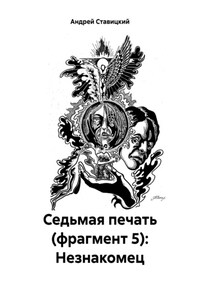It was a clear autumn morning in Calcutta, shortly after the holiday of Durga Puja. At the end of a narrow lane towered a giant image of the white tenarmed goddess, Shiva’s female incarnation,which had been built for the festivities out of bamboo slats, papier-mâché, and a considerable quantity of lurid paint. Earlier, I had walked through what appeared to be Calcutta’s central banana depot, where whole branches of cascading bananas were being unloaded by the truckload and stacked as high as firewood outside a mountain cabin. Another turning led into a street thick with the toasted smell of cooking oil, where men sat rolling and frying bright yellow sweets called laddoos, heaping them up, once cooked, in tall cones. But there, ahead of me, was the most unexpected sight of all: a vast Palladian villa, set off by a pair of wrought-iron gates, rising behind the cramped alleys like a painted stage set.
The Marble Palace, as this place is called, is only partly a house. Ever since it was built, in 1835, its owners, an orthodox Hindu family named Mullick, have filled their mansion with art and objects from all over Europe and have opened it to visitors—which makes the Marble Palace India’s “first museum of Western art.” I would learn more about the contents and the history of the Marble Palace on another day. But that morning, as I walked past the baroque fancies in the front garden and up the shallow steps, I had the feeling that I was wandering into an alternate, wonderfully unknown world. I sat on a high, cracked leather banquette in the Billiard Room. Plaster and marble images of Greek gods peered out from the walls, and ceiling fans like the propellers of World War II bombers loomed overhead. Though the honking city was just a few hundred feet away, the only sound here was birdsong, from a veritable aviary of wire cages in the courtyard beyond. It was like Dickens gone native.
It is so easy to dwell on the sheer cultural oddity of this kind of place, plainly the creation of individual sensibilities, and so at variance with its surroundings. But what if one tries to make sense of it on its own terms? I visited the Marble Palace in the course of my research on the cultural history of the British Empire. Most of what I had read about empire and culture drew a detailed if rather insidious picture of white European colonizers trying to supplant, appropriate, or denigrate the non-European peoples and societies they encountered. More attention was paid to how Europeans responded to non-Europeans than vice versa, and emphasis tended to be placed more on conflict than on convergence. But here was something quite different: a site genuinely embedded in the cultures of both East and West, and a vestige of empire still very much alive. What would it be like, I wondered, to enter imperial history through a gateway like this? What would empire look like from the inside out?
The Marble Palace was just one of many unexpected juxtapositions of East and West that I encountered while writing this book. There was the heart-stopping moment of finding the Mughal emperor’s letters in the back room of an archive in the French Alps, folded into narrow strips and bunched into a battered metal chest, as if untouched since being read by their Savoyard recipient two hundred years before. There was my discovering, one sunbaked noon in the deserted ruins of an Egyptian temple, the name of a longdead English diplomat scratched feebly into the stone—a sad grasp at immortality. Then there was spotting his arch rival’s signature in New York, of all places, carved on an inner wall of the Temple of Dendur, beneath the glass ceiling of the Metropolitan Museum of Art. There was visiting an impeccably Tuscan villa on a hillside at the edge of Florence, only to find in it a sword with a tiger-headed hilt, seized in 1799 from the South Indian city of Seringapatam during one of the British Empire’s most dramatic battles.









